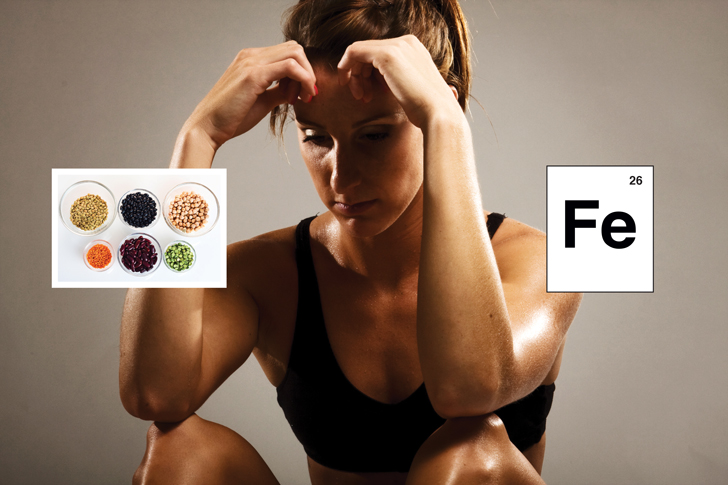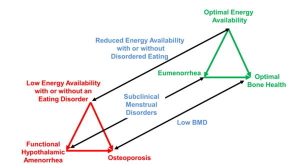Iron deficiency or anaemia results from two conditions: bleeding and a lack of iron in the athlete’s diet. Anaemia is much more common in female athletes because of menstruation. During menstruation the female athlete bleeds and therefore, loses iron.
Mentration is one of our factors in the female athlete triad. It is influenced by energy and nutrient availability. If an athlete has amenorrhea (no menstrual cycle) then their oestrogen levels are often low, which will decrease their bone density as well. If they have a normal cycle, it can lead to iron deficiency if they are not eating adequate iron levels.
Iron is a readily available nutrient found in red meats and many vegetables. If a female athlete is consuming and absorbing enough iron, menstruation is not a problem. But, if they are not consuming or absorbing enough iron, then iron deficiency results.
Iron is needed to allow haemoglobin to bind with oxygen and transport it around the body. Oxygen is used in the aerobic energy system, and good delivery of oxygen will speed up recovery from the lactic acid energy system. If a female athlete has low iron levels, then they cannot deliver enough oxygen to their muscles to sustain sports performance, as they need to rely too heavily on the anaerobic energy systems. Iron deficiency/anaemia causes fatigue to set in quickly and reduces the female athletes performance.
A lack of iron will also affect training. Not only will training not be able to be sustained for long durations, the female athlete will also feel lethargic (tired), and less motivated to train at all. Iron deficiency means he female athlete is less likely to participate in sport and when they do participate will fatigue quickly, and having a negative impact on performance.


